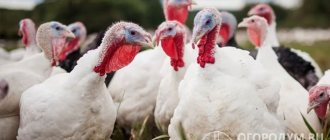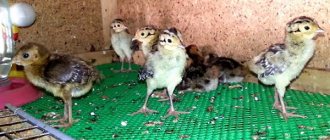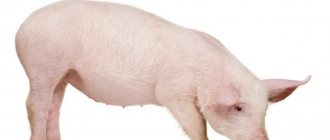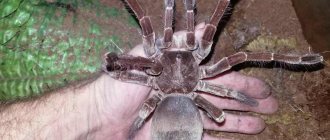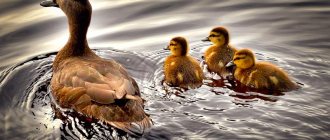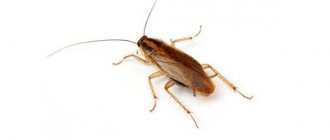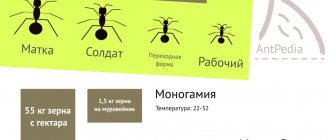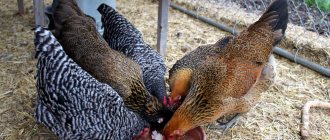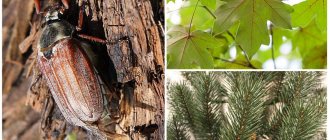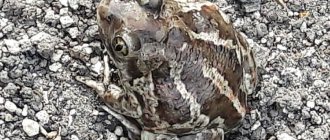Home » Articles about pigeons » What is the best way to feed pigeons?
The diet of pigeons largely depends on their habitat, and if we talk about pedigree birds, then also on the purpose of breeding. Dreaming of having his own dovecote, the future breeder should study the physiology of birds at different periods of life, as well as familiarize himself with information about the best way to feed pigeons.
What do pigeons eat
Pigeons are one of the most common types of birds in the city.
Most people believe that feeding pigeons is necessary with bread and seeds. These products are indeed the basis of the diet of urban pigeons, but the birds need adequate nutrition.
Growth requires a variety of feeds. This is especially true for domestic pigeons of rare breeds. It is precisely because of the need for a varied diet that the lifespan of the urban pigeon is reduced.
Under natural conditions in summer, pigeons eat grass and plant shoots, seeds, and grains. Due to their adaptability to feeding in parks and squares, birds do not receive enough of the active substances they need from human hands.
Their body especially suffers due to the lack of enzymes that are necessary to digest baked goods. Because of this, food remains in the stomach for quite a long time and begins to rot.
This can lead to inflammation of the mucous membrane (gastritis). Indigestible food stored in the digestive organs for a long time prevents the consumption of other foods.
What do chicks eat?
After birth, the chicks are fed by a male and a female (father and mother); human participation in this process is not required and can be harmful (some pigeons stop recognizing the chicks after being touched by a person). Feeding of the chicks is carried out with the help of “bird's milk” - this is the name of the curdled nutritious secretion, which is produced by females and males in the crop with the help of a special gland.
On days 30-35, the chicks leave the nest - after that they can be freely fed by humans.
- You can feed young animals the same foods as adults - peas, lentils, raw seeds, wheat, corn, oatmeal, buckwheat, and so on.
- Young animals need less food, so the caloric content of the diet should be reduced to 100-150 kcal. In this case, calorie content should be gradually increased as you grow.
- It is recommended to give grain to chicks in crushed form, since they have a very weak stomach. You can also give grains and legumes soaked in water.
- The proportions should be standard, but be sure to include legumes and seeds in your food, which are a valuable source of protein and fat.
Feeding outdoor pigeons
Animals living outdoors most often feed on shoots and grasses. In the absence of additional feeding, the birds will find food on their own. These will be seeds, grains of various cereals, grass leaves.
For purebred pigeons, such feeding will be quite balanced from spring to autumn.
However, often in cities, workers of housing and communal services and public improvement agencies mow the grass and trim the leaves of trees, removing opportunities for adult birds to feed.
Be sure to read:
Life expectancy of pigeons: domestic, wild and urban, how to find out age
Therefore, the feathered inhabitants of cities can starve, eating crumbs of bread or rolls, cereals and other products from human hands.
Preparing for the breeding season
Individuals of different sexes should be kept separately in winter so that they do not waste their energy on early egg-laying. Meanwhile, this is an excellent time to select pairs on paper or in a special pigeon breeder’s diary from which you can get chicks that are closest to the breed standard. The following recommendations should be taken into account:
- There is no need to leave only high-quality birds for the breed, since high-quality offspring can also be obtained from not very successful pigeons. In addition, sometimes almost perfect chicks can be quite unsightly.
- It is impossible to breed pigeons with the same defects that are unacceptable according to the standard, since in the future the offspring of the pair will have a marriage.
- Unless absolutely necessary, you should not select a couple consisting of close relatives.
- There is no need to focus on the bird’s exterior: care in incubating and feeding chicks, orientation to the area - all these characteristics are inherited.
- If there is no suitable pair, you can look for the desired bird from fellow pigeon breeders, but new birds should not be immediately allowed into the pigeon coop, as this is unsafe. Initially, they should be quarantined, keeping them separate from the rest of the pigeons for some time. You should monitor their condition and, if possible, submit their droppings for analysis to a laboratory. Young animals of low value can be added to them. If the bird is sick, it will definitely show.
- It is better not to buy pigeons kept in aviaries, since they are bred behind bars all year round and lose the ability to fly in a circle and the ability to navigate the terrain. If in the cage they cannot be distinguished from flying birds, then outside it everything becomes clear.
City pigeons live 3 times less than domestic pigeons, and also more often suffer from various diseases. However, even if the bird is kept in comfortable conditions, in winter it is necessary to pay special attention to caring for it so that it can safely survive the cold season and prepare for the breeding season.
Author of the publication
offline 1 year
Masha Popova
9
Publications: 103Comments: 0
What not to feed pigeons
Pigeons living outdoors most often feed on shoots and grasses.
You should definitely avoid the following foods:
- Black and rye breads. Lead to fermentation, bloating, diarrhea. In turn, it provokes the appearance of problems with the gastrointestinal tract. In the worst case, the bird may die.
- Meat food. Pigeons are not birds of prey; they do not secrete enzymes that digest meat in their stomachs. Therefore, this type of food gradually rots inside the body, which leads to gastritis, ulcers and death.
- Milk and fermented milk products - substances lead to the death of the microflora of the gastrointestinal tract and dysbacteriosis. Calcium is also removed from the bird's body.
- Fish. Due to the high phosphorus content in the product, such food is prohibited. Birds are unable to digest fish.
- Sunflower seeds. Feeding such food leads to mechanical damage to the crop; the peel causes liver problems in birds. In addition, the sharp parts of the peel lead to damage to the intestinal mucosa. In the worst case, peritonitis sets in and the bird dies.
Pearl barley
Pearl barley is high in calories - 320 kcal per 100 g, after cooking this figure decreases to 121 kcal. 100 g of product contains 9.3 g of protein, 1.1 g of fat, 74 g of carbohydrates. It is rich in vitamins (group B, A, E, K) and minerals (phosphorus, zinc, potassium, iron). If there is a lack of amino acids in the pigeon’s body, the amount of this cereal must be increased by 2%. If birds eat a lot of barley, the risk of obesity increases and the function of the reproductive system decreases.
Thanks to its fiber, pearl barley helps cleanse the body of pigeons of toxins, normalizes metabolic processes, digestion, and strengthens the immune system. With regular (moderate) use, birds' vision and nervous system functionality improve, and their kidneys and blood are cleansed faster. Grains help prevent diseases that were caused by bacteria or fungi.
Pearl barley can be given to domestic and outdoor pigeons. They happily eat whole or slightly crushed grains. After entering the goiter, they swell and in this form descend into the gastrointestinal tract.
Even small pigeons can be fed pearl barley after weaning. Chicks eat boiled cereals; raw grains are not suitable for them, since their crop has not yet fully performed its function (primary digestion). Adult pigeons eat pearl barley porridge with pleasure.
However, the amount of pearl barley should be limited, as it is heavy for the stomach of birds. If consumed excessively, the esophagus becomes clogged.
Features of feeding pigeons
In optimal conditions, chicks can be separated from adults for feeding at the age of about a month. After leaving the nest, the breeder needs to monitor them quite closely.
Feeding abandoned pigeons is done with a syringe and a thin rubber tube directly into the beak.
The baby must be taught to feed by hand or at home.
Chicks living separately should be given free access to liquid and food. You can feed them with small grains suitable for feeding purebred pigeons.
Water should be given warm, without additional additives. It is undesirable to allow liquid to stagnate. It is necessary to regularly change the contents of drinking bowls.
Sometimes adult birds can leave pigeons in the nest. If it is impossible to place them with other representatives of pigeons, you can try to feed them yourself.
The hatched chick is unable to survive more than a day without food and water. In addition, young animals often freeze. In order for the chick to survive, you need to take it to warm conditions and feed it for the first week with a mixture of yolk and diluted milk.
Be sure to read:
How to feed a pigeon chick at home: the right diet from the first days of life
Feeding abandoned pigeons is done with a syringe and a thin rubber tube directly into the beak.
After a week, you can start feeding porridges made from chopped peas, lentils, and milk. It is also allowed to supplement the diet with bread dipped in milk.
Number of feedings
Preparing a diet for pigeons will require a special approach.
The required number of meals depends entirely on the season. In the summer, pigeons need three meals a day. In winter it is necessary to feed the birds twice. In winter, you need to feed the bird in the morning, and then at intervals of 12 hours.
However, if pigeons are feeding chicks, you need to give them food at dawn, then at noon. The third feeding takes place at sunset.
What to feed pigeon chicks
Preparing a diet for pigeons will require a special approach . If you choose the wrong food, the chicks will not receive enough nutrients, in particular proteins.
Without the necessary substances, the growth of birds is greatly retarded. Proper feeding of birds will require the use of compressed feeds that contain large amounts of crude proteins and proteids.
You need to follow this diet until the fluff changes to full plumage. It is advisable to feed exclusively fresh food, at room temperature or above.
What to feed pigeons in winter
During the winter season, a special feed composition is required. It is advisable to reduce the amount of feed protein, otherwise females may lay eggs too early. Legumes are completely excluded from the winter diet. They are replaced with oats or barley.
It is advisable to add cereal porridge cooked in salted broth. To improve the condition of the feather cover, you need to add rapeseed and flaxseeds to the diet.
During the winter season, a special feed composition is required
Vitamins are included in the diet of birds along with dried bunches of greens or grated vegetables.
Nutrition during the molting period
This period is characterized by increased energy costs. It is necessary to increase the nutritional value of the feed. It is advisable to supplement the diet with hemp and flax seeds.
Basic information
It is customary to feed birds that live on city streets. And pigeons are no exception. It is necessary to understand that in urban conditions birds independently find their own food , guided by their inherent instincts.
The diet of domestic and wild pigeons is very different. Poultry is bred in special pigeon houses; their lifestyle is significantly different from wild pigeons. To keep your pets healthy, you need to know what they eat in the wild. You need to get answers to these questions before you decide to build a dovecote and place birds in it.
If pigeons are kept in a poultry house, then the feeding process occurs as follows:
- 3 times a day - in the warm season.
- 2 times - in the autumn-winter period: once feeding and once feeding and feeding with a fortified composition.
When choosing food for domestic pigeons, you do not need to focus on the diet of birds in nature. In winter, the first food is given to pigeons at 9 am, and then at 8 pm. Chicks need to be fed intensively. The frequency of feeding depends on their health and condition. Chicks need to be fed three times:
- at 5 o'clock in the morning,
- At 2pm,
- at 9 o'clock in the evening.
You can not only buy fresh herbs, but also grow them yourself. Plants that are beneficial to birds include alfalfa, sorrel and nettle. When birds are molting, they need to heavily 3 times a day. The main emphasis in nutrition is on protein foods, and cabbage and rapeseed are also needed. The total feed rate reaches 50 g. During the period of oviposition and reproduction, the amount of food increases to 70 g. It is based on mineral supplements and protein foods.
How to feed domestic pigeons
The main components of a bird's diet at home are grass and cereals . It is necessary to diversify the birds' diet with easily digestible food, which will provide the body with sufficient energy and building material.
The dosage depends on the breed, age, and sex of the bird. Barley becomes the basis of the cereal diet. Up to 10% can be diluted with millet. Be sure to include legumes.
Be sure to read:
How doves mate: methods of copulation, reproduction, birth of chicks
Ornithologists have banned feeding birds millet and black bread
How to help birds in the cold
Every year, winter feeding of birds (with accompanying photo and video filming) in Moscow is becoming more and more popular. And noble, and picturesque, and low-cost. And every year, poultry professionals try to teach the townspeople something fresh. New this season are “feeding zones” and separate diets for different types of birds. If you continue to feed birds the old fashioned way, you may end up missing them in the spring, ornithologists say.
“At first I hung the feeders just outside the window of the house,” says Boris Meyerson, a resident of Otradny. — In addition to traditional sparrows and titmice, greenfinches and occasionally more exotic species often flocked to feed. To recognize them, it was necessary to buy a identifier. The feeder is easily made from a plastic bottle - a five-liter bottle cut into the side turns into a wonderful “airfield”.
If 20 years ago feeding birds was a “crappy pioneer tradition” and, accordingly, only old-fashioned pensioners did it, then today such an activity no longer looks tedious and old-fashioned. On the contrary, if you add to it the opportunity to practice photographing wildlife directly from the window, you can already be called an advanced environmentalist-practitioner. And the old reasons are quite relevant: a hundred years ago, sparrows and titmice could feed all winter on “surplus” oats for feeding horses, which were found everywhere. And now, without feeding in the metropolis, only a few and the most arrogant will survive - those who do not hesitate to eat from the trash heap or “beg” from snack bars. So if you don’t feed in winter, don’t expect any “sparrow bushes” in summer.
By the beginning of December, experts promise to present an interactive Moscow map of feeding zones for different bird species. This idea was put forward by the Ornitarium in Sokolniki - a public institution dedicated to rescuing birds in trouble (example: a hawk, which the scum crucified on a wooden fence). Each group of birds needs its own food and its own feeder arrangement. Most Muscovites have simply learned how to feed birds; now they need to delve into the details.
The universal food for birds in winter is unroasted sunflower seeds, reminds Mishin. Oatmeal is also good. “The main thing is that the food does not get wet, does not stick together, or is covered with snow,” says the ornithologist. “This means that the feeder not only needs to be filled, but also cleaned.”
Exemplary feeding areas - that is, groups of feeders for different species of birds - are already opening in the park. They, as Mishin says, are equipped with boards with information - what the birds can feed and what they cannot.
“Feeders for different types of birds differ in height and design,” describes the ornithologist. “In this way, mutual tolerance of different species is realized, from woodpeckers to the smallest tits, for example blue tits.
The interactive map will become “people’s”: there you can register with your own feeder in any district of Moscow. And post photographs of birds arriving for “lunch.” Ornitaria employees promise to “ban” only those who post completely unrelated content.
If for another 10 years you could only make bird feeders with your own hands - and many never got around to it - now there is already quite a large selection of ready-made “canteens” for birds. Including transparent ones, made of plexiglass, which can be attached to the window glass using suction cups. And the set is ready! If only. there will be no conflicts with neighbors.
“I had to move the bird feeders from the window to the entrance to the apple tree,” says Boris Meyerson. - Because the neighbors obstructed us: it turned out that the feeder did not please them with the chirping and husks of seeds under the windows. Now I feed the birds as I leave the entrance: I use a long fishing rod to remove the feeders, clean and fill them, and then lift them back up.
Another problem: pigeons. Birds, which began to be bred in Moscow in the mid-twentieth century, are turning from a symbol of the big city into its curse - just like in London and Venice. Even animal rights activists call them “feathered rats” - although, of course, no one is calling for their extermination. But they also try to feed them less - so that the livestock is at least a little “regulated” by natural means.
“Protecting feeders from pigeons is another problem,” says Boris Meyerson. “I didn’t succeed the first time: I had to introduce canopies, shelves, and narrow the opening. Pigeons are very inventive: for example, if you can pour seeds out of a feeder, then one of the pigeons sits on the edge of the feeder, tilts it, and the rest wait below for the seeds to be scattered for them.
Moscow periodically discusses the possibility of introducing a fine for feeding pigeons - following the example of Venice (violation is punishable by 900 euros) and London (including on the steps of St. Paul's Cathedral - an activity glorified in the Disney film about Mary Poppins). But for now, sentimental considerations about the “dove of peace” are stronger.
Source
Diet of adult pigeons
Adult pigeons need to be provided with a special grain mixture.
The main components of the poultry diet at home are grass and cereals
When prepared at home, the mixture contains:
- up to 40% barley or pearl barley grain;
- up to 10% millet;
- 30% wheat;
- the remainder is distributed among vitamin-mineral supplements, legumes, oats and other grains.
What should you feed domestic pigeons?
Complete feeding of adults, in addition to greens, includes cereals and vegetables. It is necessary to dilute the bird menu with other types of food.
The diet should be composed of the following components:
- cereals;
- sunflower seeds, hemp seeds, rapeseed;
- grated carrots;
- sprouted cereals;
- dry feed yeast;
- granulated feed.
Vitamin and mineral supplements for feeding pigeons
Mineral fertilizers can be used to feed birds. The substances contain all the necessary macro- and microelements required by an adult bird.
It is important to use fertilizing during the breeding season, molting, and feeding offspring. Due to the calcium and phosphorus content, mineral supplements improve the strength of the shell.
Rice
To feed pigeons, grain mixtures are used, which include various cereals, such as millet, buckwheat, pearl barley (rice is also possible). Specialized food will provide the body with the necessary substances. If you cannot regularly buy such mixtures, you can prepare them yourself.
Rice is low in fat and high in starch. Thanks to these characteristics, this cereal can be given to birds. Pigeons can be fed raw and cooked rice. To feed them, peeled or unrefined (in moderation) grains are used. They are often mixed with other grains to increase the nutritional value of the feed.
It is acceptable to feed pigeons different types of rice. They happily eat white round, long steamed, brown.
Before mixing with other cereals, it is recommended to chop the rice a little, then the cereal will be better absorbed. Pigeons can be fed rice if they have digestive tract disorders. Before use, the grains are boiled until half cooked. The finished dish is sprinkled with chalk and given to the birds. Otherwise, they eat the rice raw.
Attention! It is forbidden to feed pigeons boiled rice in large quantities and often. Otherwise, the risk of pathologies of the nervous system increases.
